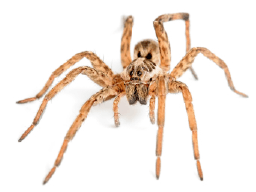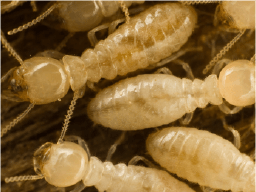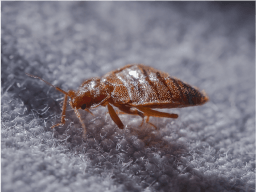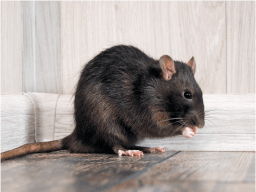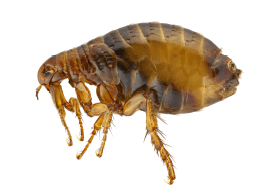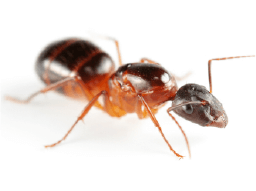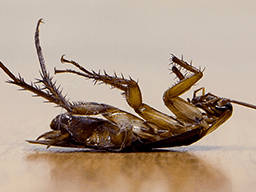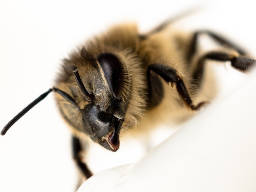7 Most Common Types of Ants Likely to Invade Your Home
by Alex Schnee | June 24, 2025 | Blog

Ants are among the most persistent household pests, with thousands of species worldwide but only a handful commonly invading homes. Each species has distinct behaviors, preferences, and challenges they present to homeowners. Understanding which ants you’re dealing with is crucial for effective control, as different species respond to different treatment methods and pose varying levels of risk to your property and family. Proper identification helps you implement targeted strategies and know when professional intervention is necessary.
1. Argentine ants
Argentine ants (Linepithema humile) are small, brown ants measuring about 1/8 inch long that have become major invasive pests in warm climates, particularly California and the southern United States. These ants form massive supercolonies that can extend for miles, with multiple queens and interconnected nests that make them extremely difficult to eliminate. Unlike many ant species that are territorial toward other colonies, Argentine ants from the same supercolony cooperate across vast areas.
They’re attracted to sweet substances and moisture, commonly entering homes through cracks around windows, doors, and foundations. Argentine ants prefer to nest outdoors in shallow soil under concrete slabs, stones, or mulch, but will establish satellite colonies indoors during dry conditions or when outdoor food sources become scarce.
Their aggressive nature allows them to displace native ant species, and their flexible nesting habits make them particularly challenging to control. Argentine ants don’t have a distinct odor when crushed and are most active during warm weather. Their ability to quickly relocate colonies when threatened and their tendency to split into multiple colonies when stressed make conventional control methods often ineffective, typically requiring professional intervention for successful elimination.
2. Pavement ants
Pavement ants (Tetramorium caespitum) are small, dark brown to black ants measuring about 1/8 inch long, easily recognizable by the small piles of soil they create along cracks in sidewalks, driveways, and building foundations. These ants get their name from their preference for nesting under pavement, concrete slabs, and stone structures where they excavate extensive underground colonies.
They’re omnivorous feeders attracted to both sweet and greasy foods, making kitchens their primary indoor target. Pavement ants commonly enter homes through foundation cracks, under doors, and around utility penetrations, particularly during spring and fall when outdoor temperatures fluctuate. Their colonies can contain multiple queens and thousands of workers, with outdoor nests sometimes visible as small volcano-shaped mounds of displaced soil.
These ants are most active during daylight hours, distinguishing them from many nocturnal species. They’re known for their aggressive territorial battles with other ant colonies, sometimes resulting in large numbers of dead ants on sidewalks and driveways. Pavement ants can bite when threatened, though their bites are generally harmless to humans. Their persistent nature and ability to establish both indoor and outdoor colonies make them particularly challenging for homeowners to eliminate without professional assistance.
3. Carpenter ants
Carpenter ants (Camponotus species) are among the largest ants commonly found in homes, with workers ranging from 1/4 to 1/2 inch in length. They’re typically black, though some species may be red, brown, or bicolored. Unlike termites, carpenter ants don’t eat wood but excavate galleries in wooden structures to create nesting sites, particularly targeting moisture-damaged or soft wood areas.
These ants are primarily nocturnal and often go unnoticed until their damage becomes extensive. They’re attracted to protein and sweet foods, with scout ants following scent trails to establish foraging routes. Carpenter ants require moisture and are often found near leaky pipes, roof damage, or areas with poor ventilation where wood stays damp.
Their presence often indicates underlying moisture problems that need addressing beyond ant control. Carpenter ant colonies develop slowly but can eventually contain thousands of workers and multiple satellite colonies. They don’t sting but can bite and spray formic acid, which can be painful. The most concerning aspect of carpenter ants is their potential to cause structural damage over time, making early detection and professional treatment crucial. Finding sawdust-like frass (wood shavings) near wooden structures often indicates active carpenter ant tunneling and warrants immediate attention.
4. Fire ants
Fire ants (Solenopsis species) are aggressive, reddish-brown ants measuring 1/8 to 1/4 inch long, notorious for their painful stings and aggressive defensive behavior. Primarily outdoor nesters, they build distinctive dome-shaped mounds in yards, gardens, and open areas, but may enter homes during extreme weather or when seeking food sources. Fire ants are omnivorous but particularly attracted to protein sources, pet food, and electrical equipment.
Their most dangerous characteristic is their aggressive stinging behavior—when their colony is disturbed, hundreds of workers can swarm out to attack perceived threats. Fire ant stings inject venom that causes immediate burning pain followed by pustule formation that can last for weeks. Some individuals may experience severe allergic reactions requiring medical attention.
Fire ants can damage electrical equipment and air conditioning units, apparently attracted to electromagnetic fields. They can also harm young plants and small animals. Their colonies can contain multiple queens and hundreds of thousands of workers, making elimination challenging. Fire ants are excellent survivors that can form living rafts during floods and quickly establish new colonies. Due to their medical significance and aggressive nature, fire ant problems typically require professional pest control intervention for safe and effective elimination.
5. Odorous house ants
Odorous house ants (Tapinoma sessile) are small, dark brown to black ants measuring about 1/8 inch long, named for the distinctive rotten coconut-like odor they emit when crushed. These ants are highly adaptable and can nest both indoors and outdoors, preferring areas with moisture such as wall voids near water heaters, leaky pipes, or humid basements.
They’re attracted to sweet foods and are commonly found trailing to sugary spills, pet food, or stored foods in pantries. Odorous house ants can quickly establish multiple colonies through a process called budding, where part of a colony splits off to form new colonies, making them particularly difficult to eliminate. Their colonies can contain multiple queens and thousands of workers.
These ants don’t sting or bite but can contaminate food sources as they forage. They’re most active during warm weather and may move their colonies seasonally between indoor and outdoor locations. Odorous house ants often enter homes through cracks around windows, doors, and foundations, and they can quickly establish trails leading to food sources.
Their ability to rapidly relocate colonies when threatened and their tendency to form satellite colonies make conventional ant baits less effective, often requiring professional treatment strategies that target their unique colonial structure and behavior patterns.
6. Thief ants
Thief ants (Solenopsis molesta) are among the smallest ants that invade homes, measuring only 1/16 to 1/8 inch long with yellow to light brown coloration. They get their name from their habit of stealing food from other ant colonies and their tendency to build nests near larger ant colonies to raid their food stores. Due to their tiny size, thief ants can enter homes through the smallest cracks and crevices.
These ants prefer protein sources, particularly grease and meat, but will also feed on dead insects and other organic matter. They’re often found in kitchens and pantries, though their small size makes them easily overlooked until populations become large. Thief ants can nest in extremely small spaces, including wall voids, under flooring, and inside electrical outlets.
Their colonies are typically smaller than other ant species but can still contain thousands of workers. Thief ants don’t sting humans but may bite if handled, though their bites are generally not painful due to their small size. They can contaminate food sources and are particularly problematic in food storage areas.
Because of their tiny size and cryptic nesting habits, thief ant infestations often go undetected for extended periods, allowing populations to become well-established before homeowners notice them. Their ability to exploit very small food sources and nesting spaces makes them challenging to eliminate without professional intervention.
7. Pharaoh ants
Pharaoh ants (Monomorium pharaonis) are small, yellow to light brown ants measuring about 1/16 inch long that are particularly problematic in healthcare facilities, apartment buildings, and other multi-unit structures. These ants are tropical in origin and cannot survive outdoors in temperate climates, making them exclusively indoor pests in most regions.
They prefer warm, humid environments and are commonly found near heat sources like furnaces, water heaters, and heated buildings. Pharaoh ants are attracted to a wide variety of foods including sweets, proteins, and fats, but they can also feed on unusual substances like shoe polish, soap, and even blood and wound dressings in medical facilities.
Their most challenging characteristic is their colony structure—Pharaoh ant colonies contain multiple queens and can quickly establish satellite colonies through budding when stressed. This means that conventional treatments often make infestations worse by causing colonies to split into multiple new colonies throughout a structure.
Due to their complex colonial structure, Pharaoh ant infestations typically require specialized professional treatment using slow-acting baits that allow workers to carry toxicants back to all colony members before symptoms appear.
When to talk to a professional
If you’re seeing ants in your home and aren’t sure which species you’re dealing with, contact our partners associated with Pest Control Experts today for a free quote and proper identification! Our experts will determine exactly which ant species has invaded your home and implement targeted control methods based on their specific behaviors and colony structures.
Common types of ants FAQs
Here are some frequently-asked questions from homeowners wondering what type of ants have invaded their home.
Can I get rid of ants in my home on my own?
Some ant infestations can be managed with DIY methods including proper sanitation, sealing entry points, and using commercial baits or sprays. However, success varies significantly by species—simple infestations of pavement or odorous house ants might respond to homeowner efforts, while carpenter ants, Argentine ants, and Pharaoh ants typically require professional intervention due to their complex colony structures and specialized behaviors. Species that form multiple colonies or have unique nesting habits often become worse with improper treatment attempts.
Which types of ants bite?
Most ant species can bite when threatened, but some are more likely to do so than others. Carpenter ants have strong mandibles and can deliver painful bites while also spraying formic acid. Pavement ants will bite defensively but their bites are generally minor. Fire ants are the most aggressive, delivering painful stings (not bites) that inject venom. Thief ants and Pharaoh ants can bite but are too small to cause significant pain, while odorous house ants rarely bite humans.
Which types of ants cause the most damage?
Carpenter ants cause the most serious structural damage by excavating galleries in wooden building components, potentially compromising structural integrity over time. Fire ants can damage electrical equipment and harm plants and small animals. Argentine ants cause extensive ecological damage by displacing native species but limited structural damage. Other species like pavement, odorous house, thief, and Pharaoh ants primarily cause contamination and nuisance problems rather than significant property damage, though they can spoil food supplies.
Which types of ants are the most dangerous?
Fire ants are the most dangerous due to their aggressive stinging behavior and venom that can cause severe allergic reactions and medical emergencies. Pharaoh ants pose significant health risks in medical facilities by potentially transmitting bacteria and contaminating sterile equipment. Carpenter ants, while not directly dangerous to humans, can cause expensive structural damage. Other species like Argentine, pavement, odorous house, and thief ants are primarily nuisance pests that don’t pose serious health risks but can contaminate food sources.
What are common signs of an ant infestation?
Common signs include discovering ant trails leading between food sources and nest sites, finding small piles of soil or debris near entry points, seeing live ants in kitchens or other areas of your home, and noticing damage to food packaging or stored goods. You might also find shed wings near windows during swarming season, discover sawdust-like frass from carpenter ants, or smell distinctive odors when ants are crushed. Different species leave different types of evidence depending on their nesting and feeding behaviors.





